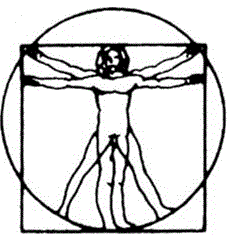Neurofeedback and Sleep
Sleep patterns are among the first changes that individuals notice once beginning Neurofeedback.

Sleep, in many instances, is one of the first changes that patients seem to notice once beginning Neurofeedback (NFB). Many patients find that after receiving NFB they have an easier time falling asleep at night, “getting started” in the morning, and/or feeling rested. This is due to training the brain to either increase or decrease certain brainwaves. The adjustment of these brain waves normalize sleep for the brain.
Patients may receive NFB for sleep difficulties, such as insomnia, Restless Leg Syndrome, and Sleep Onset Latency. Since each individual is different, we address symptoms on a case-by-case basis with a personalized training plan created individually for each patient. Below are some examples of sleep issues you may be experiencing:
-
Sleep Onset Insomnia – 2 possible explanations
-
If you get to bed at a reasonable hour, but can’t fall asleep within 10-20 minutes, this may be due to low Sensory Motor Rhythm activity in the sensory motor cortex. Individuals with these frequency patterns may often be unsettled sleepers, grind their teeth during sleep, or have restless legs.
-
Fast brainwave activity in the back right of the brain may cause anxiety and in turn, sleep onset is difficult.
-
-
Light Sleeper and Frequent Awakening
-
If you wake up several times in the night and don’t feel rested when you wake up, your brain may be fast-dominant. This means that your brain produces more beta than needed, awakening you in the middle of a REM cycle. While you may be able to get back to sleep easily, this pattern keeps you from deep, dream sleep, which can result in fatigue during the day.
-
-
Non-Restorative Sleep
-
Not feeling rested even if you have a full night’s sleep can result from the pattern seen above under ‘Light Sleeper’
-
It can also be due to:
-
Low-dominant wave patterns which can prevent REM sleep. While you may sleep deeply and awaken slowly, you may not feel rested.
-
Strong, slow alpha frequency patterns, which don’t allow for proper Alpha-Delta sleep. This means that your brain is unable to achieve a Delta sleep state during which physical restoration happens. This pattern may also correlate with chronic pain and fatigue.
-
-
NFB can impact sleep directly by targeting the areas of the brain that help the body shut down at night, wake up in the morning, and remain alert throughout the day. Another way to address these issues is by training specific brainwaves. For instance, fast brainwaves keep a person on high alert when he or she is trying to sleep. By reinforcing calm, restful brainwaves, the brain learns a new pattern in which it can relax and prepare for sleep more readily.
Two brainwaves that significantly affect sleep are peak Alpha and Mid-Beta, also identified as Sensory Motor Rhythm (SMR). Training peak alpha at P4 to be 10 Hz can help an individual be more alert in the day and influence restful sleep at night.
Training SMR at sites C4, C2, and Cz directly influences sleep in multiple ways. Site C4 is important in allowing the body to physically shut down. People who have trouble falling asleep respond to this training because their body and brain are then able to reach the relaxed state needed for sleep. People who have trouble waking in the morning respond to training at C3. People who sleep but don’t feel rested often benefit from SMR training at various sites to aid in activating sleep spindles. These sleep spindles are best described as a burst of SMR activity that occur during non-rapid eye movement (NREM) stage 2 sleep. They consist of 12–14 Hz waves occurring for at least 0.5 seconds. Sleep spindles area important for memory consolidation and remaining asleep. Individuals who exhibit a greater amount of sleep spindles tend to sleep more soundly throughout the night.
Conditions Improved by Neurofeedback
Articles and Research: Impact on Sleep
